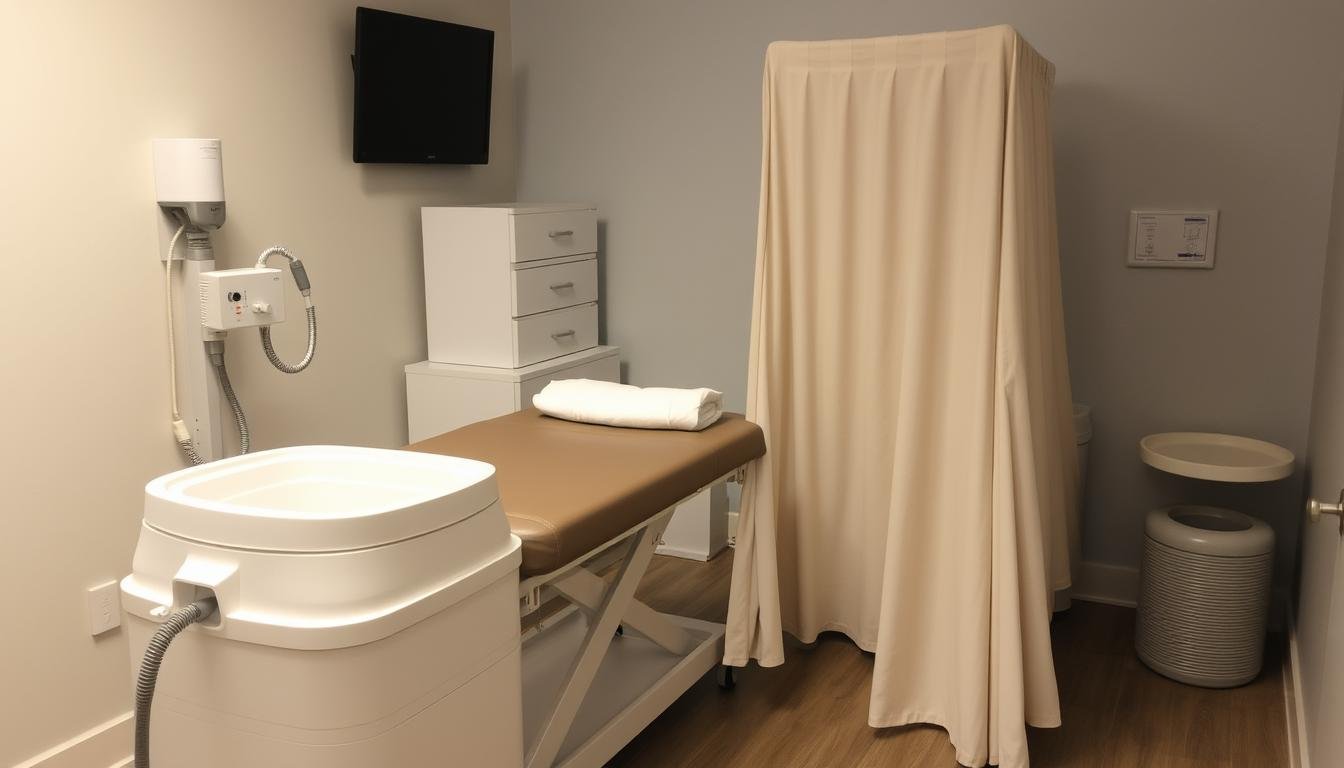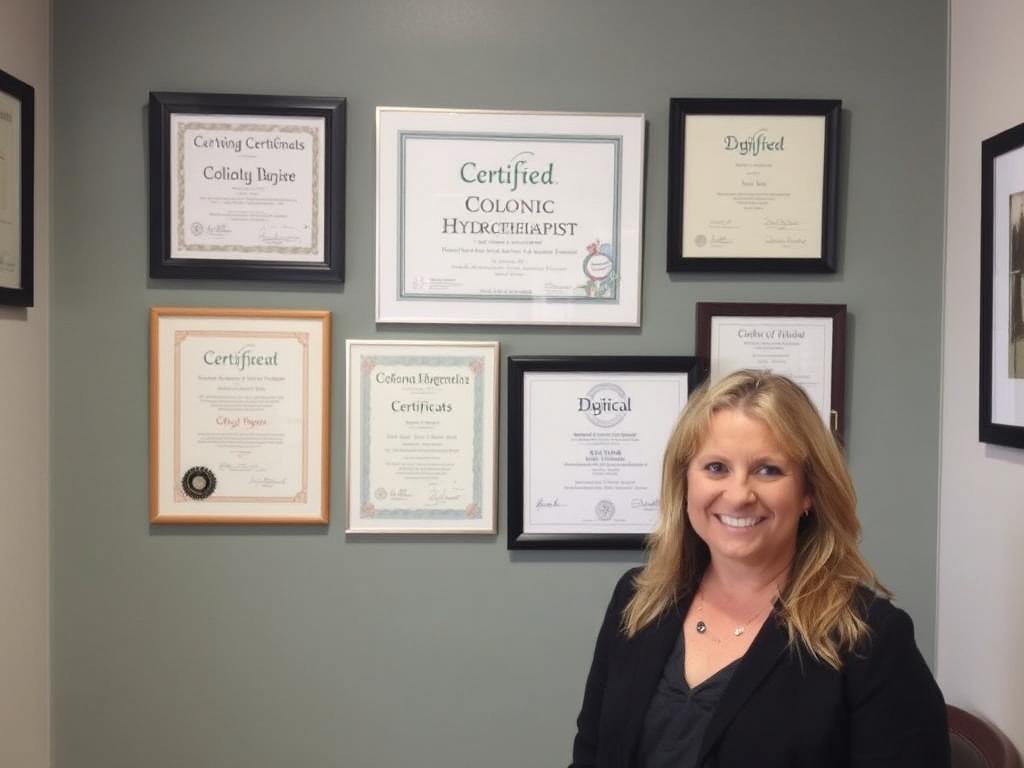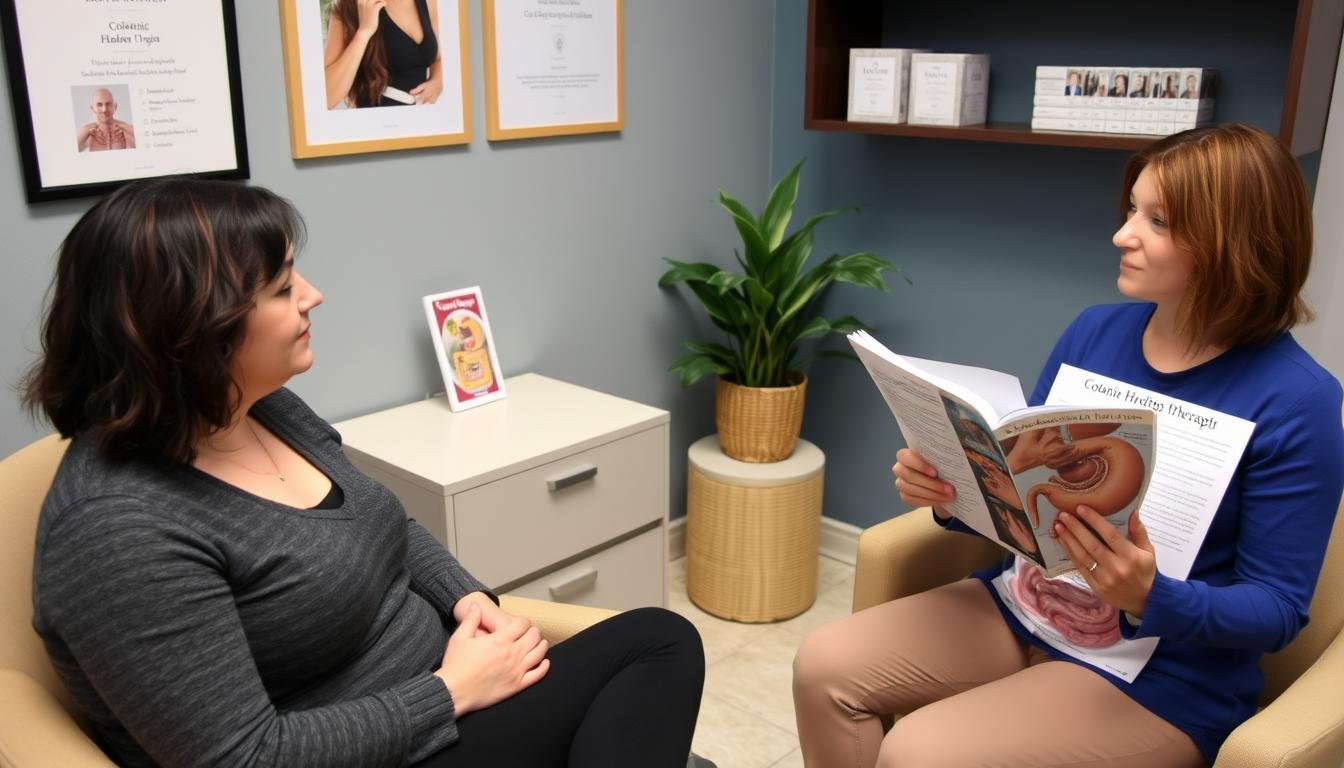Kolon Hydrotherapy Aparèy Manifakti
Ki sa ki idroterapi kolon?

Idroterapi kolon se yon pwosedi ki enplike nan dousman flòch kolon an ak cho, dlo filtre yo retire materyèl fatra ak toksin soti nan trip la gwo. Pratik sa a ansyen dat tounen nan sivilizasyon moun peyi Lejip ak grèk, ki moun ki kwè ke akimile dechè nan kolon an te kapab mennen nan pwoblèm sante divès kalite.
Pandan pwosedi a, yon hydrotherapis kolon sèvi ak ekipman espesyalize prezante dlo nan kolon an nan yon ti, tib jetab antre nan dèyè a. Dlo a ede adousi ak kraze matyè fekal, ki se Lè sa a, elimine nan peristalis natirèl ak sistèm nan irigasyon yo.
Kontrèman ak yon lavman, ki sèlman rive nan pati ki pi ba nan kolon an, idroterapi kolon gen pou objaktif pou netwaye tout gwo trip la. Yon sesyon tipik dire apeprè 45 minit nan yon èdtan epi yo ka enplike plizyè ranpli ak vid sik.
Wòl nan yon hydrotherapis kolon

Yon hydrotherapis kolon se yon pratikan ki espesyalize nan administre pwosedi netwayaj kolon yo. Responsablite yo pwolonje pi lwen pase tou senpleman fè pwosesis la irigasyon yo.
Responsablite Prensipal yo
- Fè premye konsiltasyon pou evalye istwa sante kliyan epi detèmine si idroterapi kolon ki apwopriye
- Eksplike pwosedi a an detay, ki gen ladan sa ou dwe atann pandan ak apre tretman an
- Preparasyon ak kenbe ekipman esteril ak asire yon pwòp, konfòtab anviwònman
- Administre pwosedi irigasyon kolon an san danje epi efektivman
- Siveyans kliyan nan tout sesyon an pou konfò ak sekirite
- Bay pòs-tretman konsèy sou hydrasyon, nitrisyon, ak swivi swen
- Kenbe dosye kliyan detaye ak nòt tretman
Pwofesyonèl idroterapi kolon yo souvan gen orijin nan medikaman konplemantè, retrèt, oswa lòt jaden swen sante. Yo ta dwe ranpli fòmasyon espesyalize nan teknik idroterapi kolon ak konprann anatomi gastwoentestinal ak fizyoloji.
Pwosedi irigasyon kolon an

Zouti ak ekipman
Hydrotherapists kolon itilize ekipman espesyalize ki tipikman gen ladan:
- Yon machin irigasyon kolon ak tanperati ak kontwòl presyon
- Jetab, sèl-itilize espekil ak tib pou ijyèn
- Sistèm dlo filtre pou asire pite dlo
- Sistèm jete dechè ki opere nan yon anviwònman fèmen
- Ekipman esterilizasyon pou eleman ki pa dispoze
Pwosesis etap-pa-etap
- Kliyan an chanje nan yon ròb epi li bay manti alèz sou yon tab tretman
- Hydrotherapis la foure yon ti, lubrifye espekilòm nan dèyè a
- Cho, dlo filtre koule dousman nan kolon an nan presyon kontwole
- Terapis la ka itilize limyè masaj nan vant ede lage gaz bloke oswa fatra
- Waste materyèl ak dlo sòti nan yon tib separe nan yon sistèm fèmen
- Pwosesis la repete plizyè fwa pandan sesyon an 45-60 minit
- Apre fini, kliyan an ka itilize twalèt la pou ranvwaye nenpòt dlo ki rete yo
Pandan pwosedi a, apeprè 16 galon dlo ka pase nan entesten an. Gen kèk pratik ki ka ajoute perfusion èrbal oswa plus nan dlo a, menm si prèv pou benefis adisyonèl limite.
Benefis potansyèl de idroterapi kolon

Defandè nan idroterapi kolon sijere plizyè benefis potansyèl, menm si li enpòtan sonje ke prèv syantifik ki sipòte anpil nan reklamasyon sa yo rete limite.
Souvan reklame benefis yo
- Amelyore fonksyon dijestif ak regilarite entesten
- Soulajman nan gonfleman, gaz, ak malèz nan vant
- Potansyèl soulajman nan sentòm sendwòm entesten chimerik
- Nivo enèji amelyore ak klè mantal
- Sipò pou pwosesis dezentoksikasyon
Pèspektif syantifik
Yon ti etid pilòt ki soti nan 2016 ki enplike 18 patisipan yo te note kèk amelyorasyon nan sentòm sendwòm entesten chimerik apre irigasyon kolon. Patisipan yo te rapòte redwi doulè nan vant, konstipasyon, ak dyare.
Sepandan, pi fò otorite medikal, ki gen ladan òganizasyon gastroenteroloji endikap, mete aksan sou ki fwa kò a ak ren yo deja trè efikas nan retire toksin. Konsèp la nan “Autointoxication” (toksin soti nan kolon an koule nan kò a) ki anba reklamasyon anpil sou netwayaj kolon te lajman debunked pa syans modèn.
Lè ou konsidere idroterapi kolon?
Si w ap fè eksperyans pwoblèm dijestif, li enpòtan pou konsilte avèk pwofesyonèl swen sante ki ka bay konsèy pèsonalize ki baze sou sitiyasyon sante espesifik ou.
Konsiderasyon sekirite ak risk

Pandan ke gen kèk moun ki rapòte eksperyans pozitif ak idroterapi kolon, pwosedi a pote plizyè risk potansyèl ki ta dwe ak anpil atansyon konsidere.
Lè li kapab apwopriye
- Kòm preparasyon pou sèten pwosedi medikal (anba sipèvizyon medikal)
- Pou moun ki gen kondisyon espesifik lè rekòmande pa yon founisè swen sante
- Lè fèt pa sètifye, pratik ki gen eksperyans lè l sèvi avèk ekipman apwopriye
Risk potansyèl yo
- Dezidratasyon ak elektwolit move balans
- Pèrforasyon entesten (yon ijans medikal)
- Enfeksyon soti nan ekipman mal esterilize
- Dezòd nan bakteri zantray benefisye
- Kè plen, vètij, ak kranp nan vant
Kontr
Hydrotherapy kolon pa apwopriye pou tout moun. Li ta dwe evite pa moun ki gen:
- Resan operasyon nan vant oswa kolon
- Aktif maladi enflamatwa entesten tankou Crohn a oswa kolit emorajik
- Diverticulitis oswa emoroid grav
- Ren oswa maladi kè
- Anemi grav oswa maladi san
- Grosès
- Kansè kolon
Toujou konsilte avèk founisè swen sante prensipal ou anvan ou sibi idroterapi kolon, espesyalman si ou gen nenpòt ki kondisyon sante ki egziste deja oswa enkyetid.
Jwenn yon idroterapis kolon ki kalifye

Si ou ap konsidere idroterapi kolon, jwenn yon pratik ki kalifye ak ki gen eksperyans se kritik pou sekirite ak efikasite.
Sètifikasyon ak kalifikasyon
Gade pou idroterapi kolon ki gen:
- Sètifikasyon nan òganizasyon rekonèt tankou Asosyasyon Entènasyonal pou Hydrotherapy Colon (I-ACT) oswa Asosyasyon an ki anrejistre Hydrotherapists Colon (Arch)
- Fòmasyon fòmèl nan teknik idroterapi kolon
- Istorik nan swen sante, retrèt, oswa medikaman konplemantè
- Aktyèl premye swen ak sètifikasyon CPR
- Kontinye edikasyon nan jaden yo
Kesyon yo mande anvan anrjistreman
- Ki kalifikasyon ou yo ak konbyen tan ou te pratike?
- Èske ou fè yon evalyasyon sante apwofondi anvan tretman an?
- Ki kalite ekipman ou itilize ak ki jan li esterilize?
- Èske ou itilize spekulasyon jetab ak tib?
- Kisa mwen ta dwe atann pandan ak apre pwosedi a?
- Ki pwotokòl ou genyen an plas pou ijans yo?
- Konbyen sesyon ou rekòmande e poukisa?
Pare pou jwenn yon pwofesyonèl ki kalifye?
Pran premye etap la nan direksyon pou jwenn yon idroterapi sètifye kolon ki satisfè estanda ki pi wo nan sekirite ak pwofesyonalis.
Preparasyon pou sesyon idroterapi kolon ou

Bon preparasyon ka ede asire yon eksperyans idroterapi pi konfòtab ak efikas.
Anvan randevou ou
- Rete byen idrate pandan plizyè jou anvan sesyon ou an
- Manje pi lejè, manje fasil dijèstibl 24-48 èdtan anvan
- Evite manje gaz-fòme tankou pwa, chou, ak bwason ki gen gazeuz
- Diminye konsomasyon nan manje trete, sik, ak alkòl
- Konsidere ogmante konsomasyon fib ou piti piti nan jou anvan yo
- Evite manje pou 2 èdtan anvan randevou ou
Ki sa ki pote
- Konfòtab, ki lach-sere rad yo mete apre pwosedi a
- Yon lis konplè nan nenpòt ki medikaman, sipleman, oswa remèd fèy ou ap pran
- Enfòmasyon Istwa Sante ou
- Nenpòt kesyon ou gen pou hydrotherapis la
Pifò nan klinik hydrotherapy kolon bay tout lòt bagay ou pral bezwen pandan sesyon ou, ki gen ladan rob, sèvyèt, ak pwodwi ijyèn.
Kesyon yo poze souvan

Konbyen yon sesyon idroterapi kolon koute?
Pri yo varye selon kote ak eksperyans pratikan, men tipikman varye ant $ 45 ak $ 150 pou chak sesyon. Anpil pratik ofri rabè pake pou sesyon miltip. Asirans jeneralman pa kouvri idroterapi kolon kòm li te konsidere kòm yon pwosedi ochwa.
Konbyen sesyon yo rekòmande?
Sa a varye ki baze sou bezwen endividyèl ak objektif. Gen kèk pratik rekòmande yon premye seri de 3-6 sesyon espace sou plizyè semèn, ki te swiv pa sesyon antretyen jan sa nesesè. Sepandan, pa gen okenn konsansis syantifik sou yon frekans optimal.
Èske idroterapi kolon ki fè mal?
Pifò moun ki rapòte minim malèz pandan pwosedi a. Ou ka fè eksperyans yon santiman nan plen, kranp modere, oswa ankouraje a gen yon mouvman entesten kòm dlo antre nan kolon an. Yon idroterapi kolon kalifye ap ajiste tanperati dlo ak presyon pou maksimize konfò.
Ki sa ki nan diferans ki genyen ant yon kolon ak yon lavman?
Yon lavman tipikman itilize yon ti kantite likid (1-2 ka) epi sèlman rive nan rektòm lan ak pi ba kolon. Kolon idroterapi itilize plis dlo (jiska 16 galon), rive nan tout kolon an, epi li se administre pa yon pwofesyonèl lè l sèvi avèk ekipman espesyalize.
Èske gen altènativ pou idroterapi kolon pwofesyonèl?
Wi, gen apwòch dou pou sipòte sante kolon, ki gen ladan konsomasyon fib ogmante, idratasyon apwopriye, fè egzèsis regilye, ak plus. Gen kèk moun ki jwenn soulajman nan konstipasyon okazyonèl ak dou, doktè-apwouve remèd lakay yo. Toujou konsilte avèk yon founisè swen sante anvan ou eseye nenpòt tretman lakay yo.
Fè yon desizyon enfòme

Kolon idroterapi rete yon pratik kontwovèsyal nan medikaman endikap. Pandan ke kèk moun ki rapòte eksperyans pozitif ak benefis, prèv syantifik ki sipòte anpil reklamasyon yo limite, ak pwosedi a pote risk potansyèl yo.
Desizyon an pou pouswiv idroterapi kolon ta dwe fè reflechi, ak konsiderasyon nan sitiyasyon sante pèsonèl ou ak apre konsiltasyon ak founisè swen sante ki kalifye. Si w ap fè eksperyans pwoblèm dijestif, konsidere eksplore konvansyonèl apwòch medikal premye, menm jan yo ka bay soulajman ak mwens risk.
Si ou deside eseye idroterapi kolon, priyorite pou jwenn yon sètifye, ki gen eksperyans hydrotherapis kolon ki kenbe estanda ki pi wo nan sekirite, ijyèn, ak pwofesyonalis.
Pran pwochen etap la nan vwayaj sante dijestif ou
Si ou ap chèche soulajman nan pwoblèm dijestif oswa eksplore apwòch sante konplemantè, pale ak pwofesyonèl ki kalifye se pi bon premye etap la.
